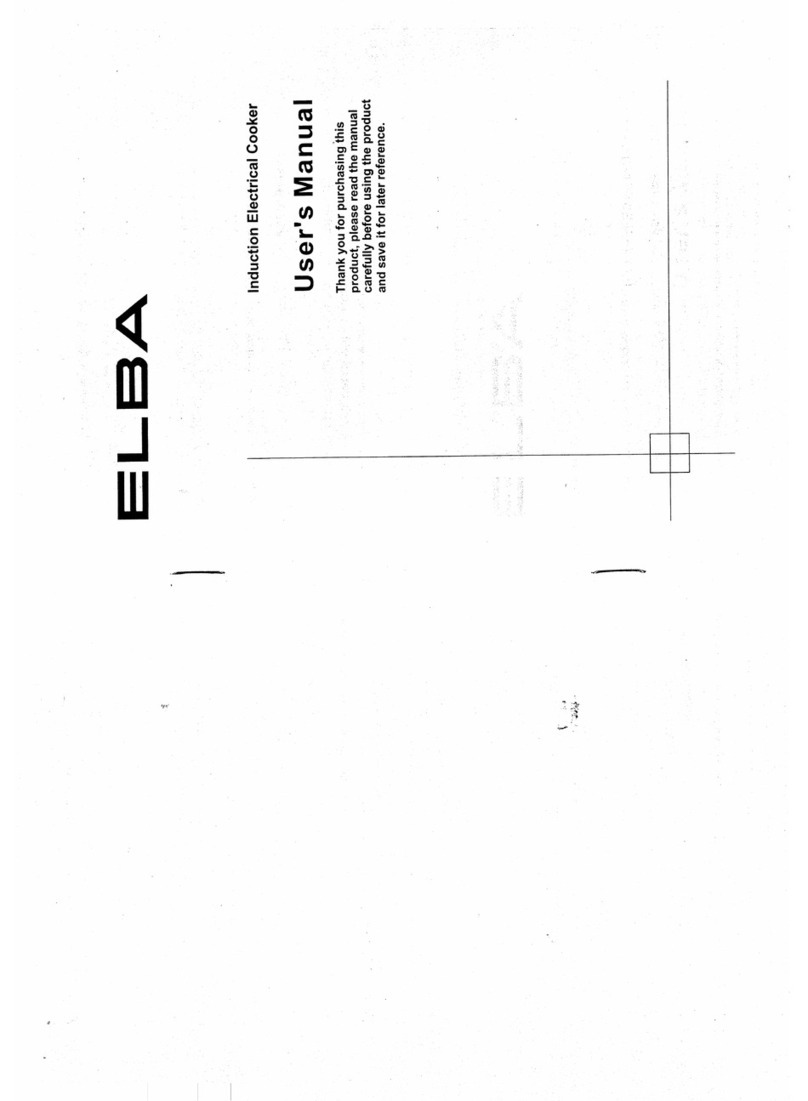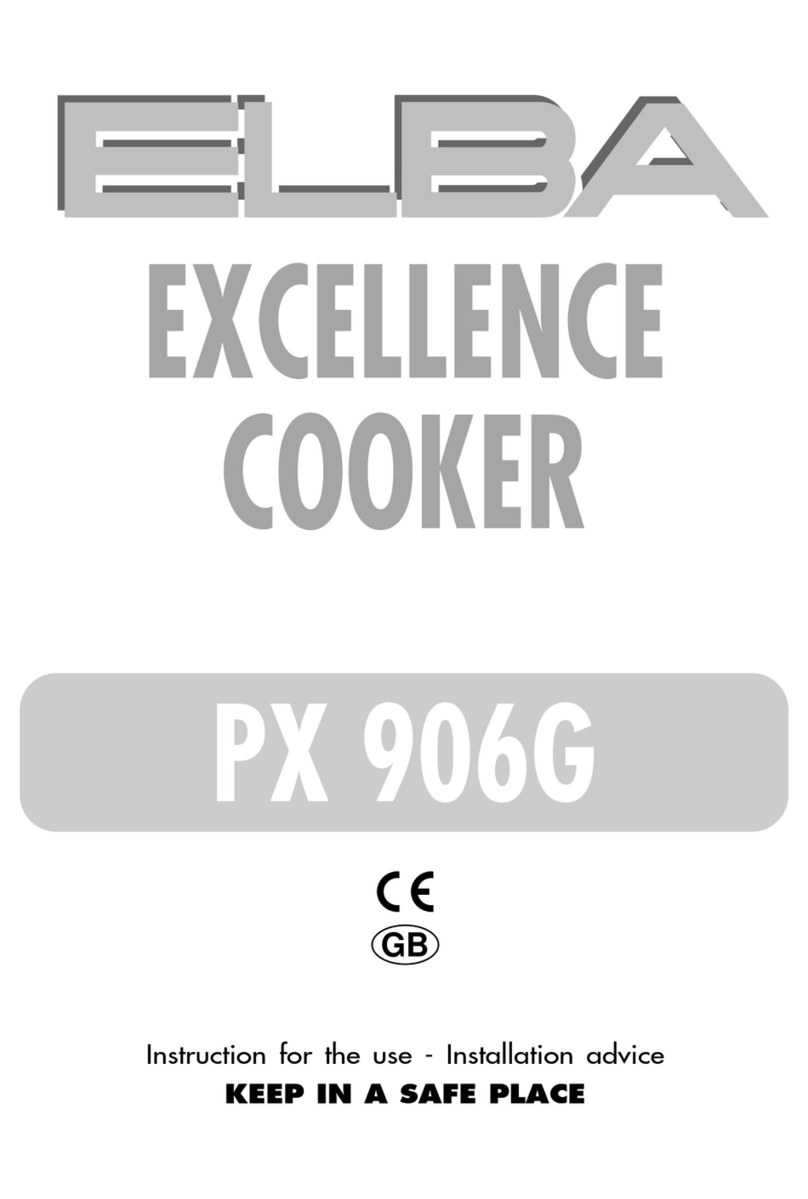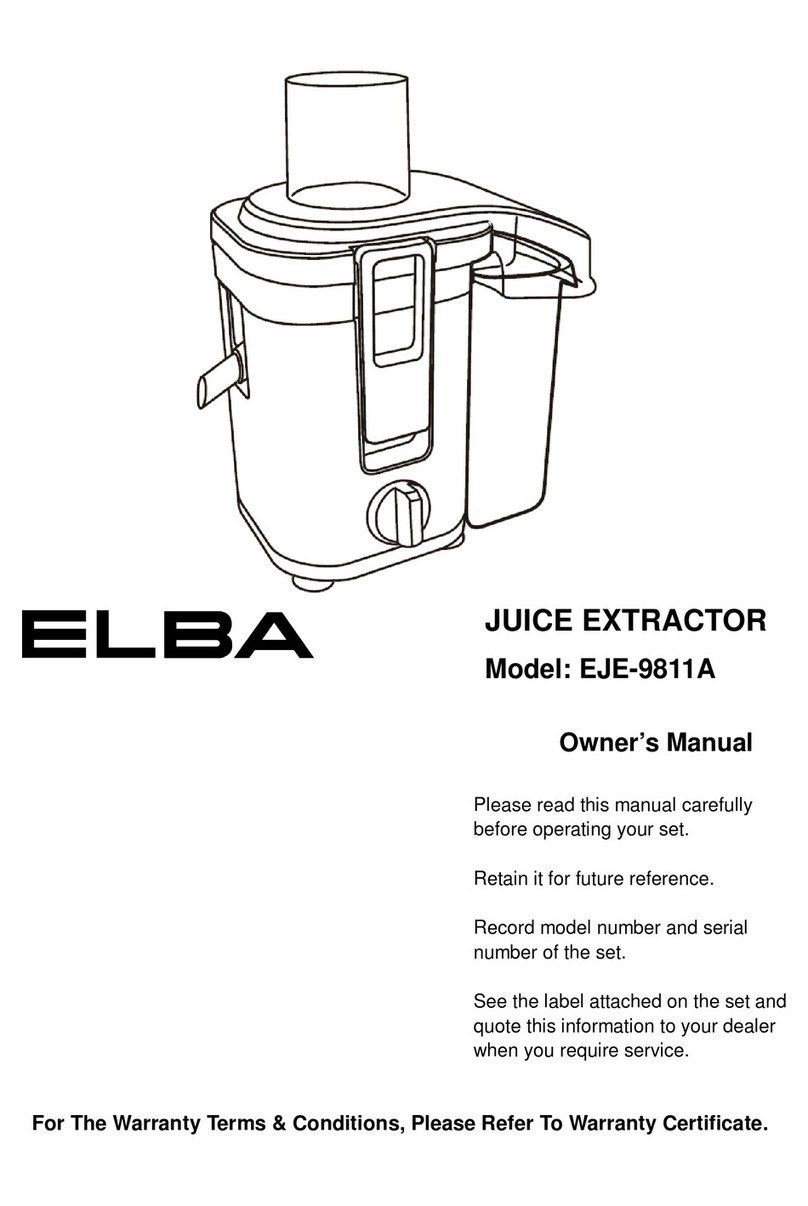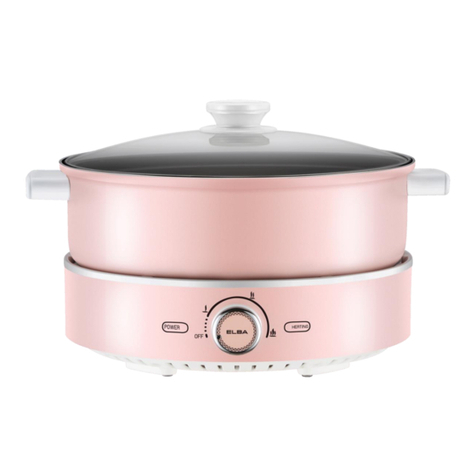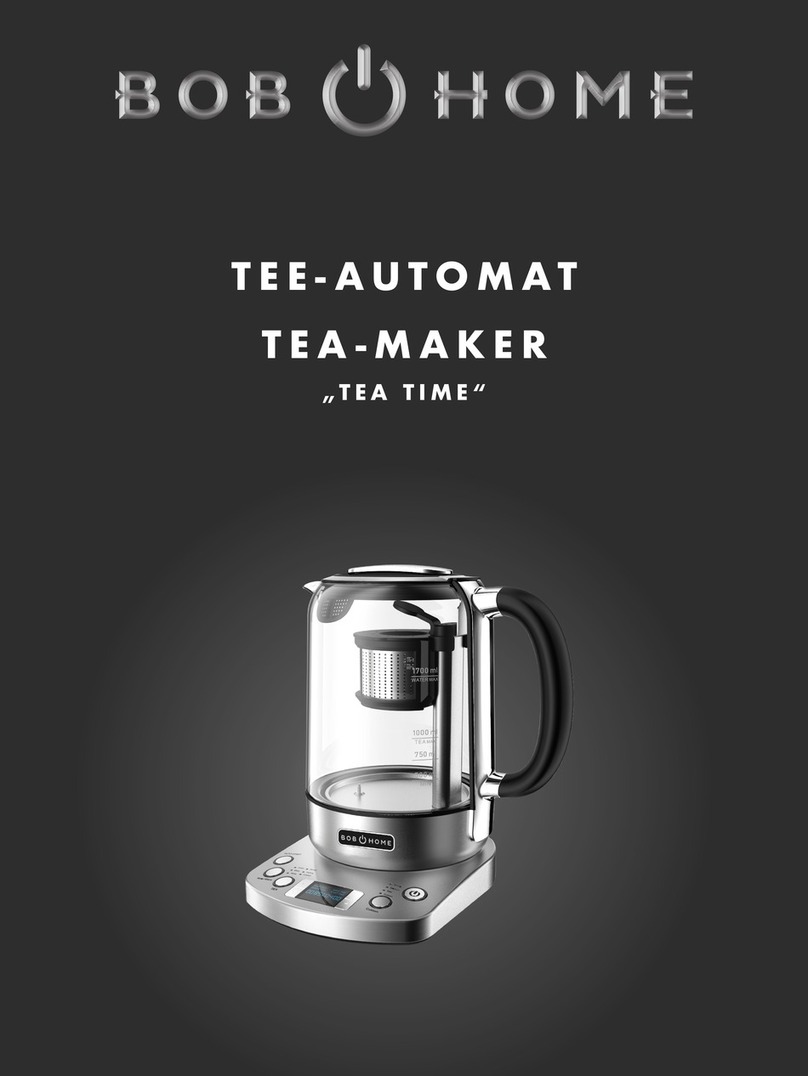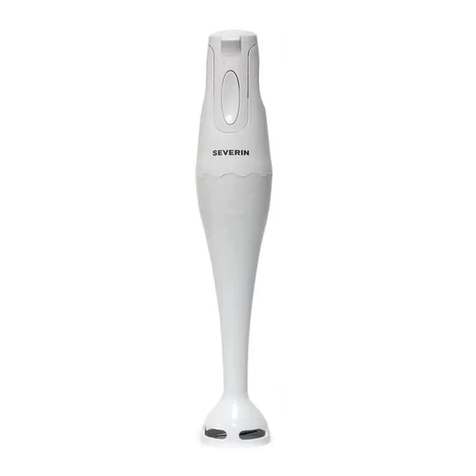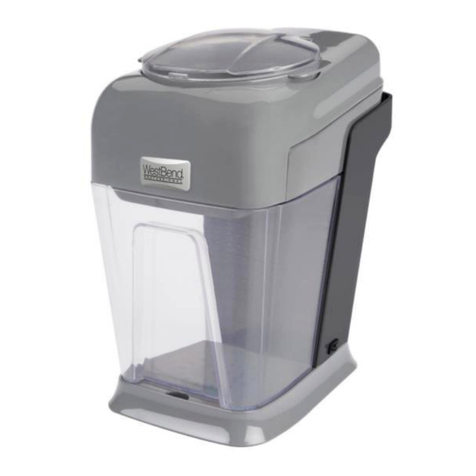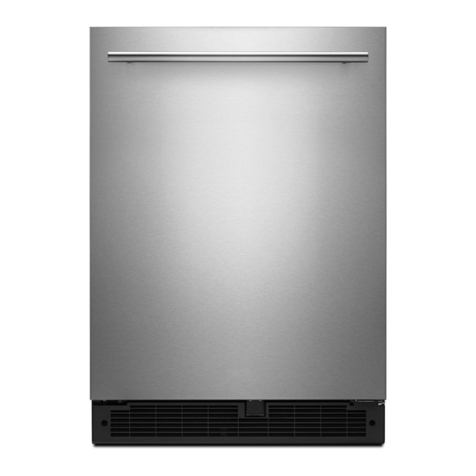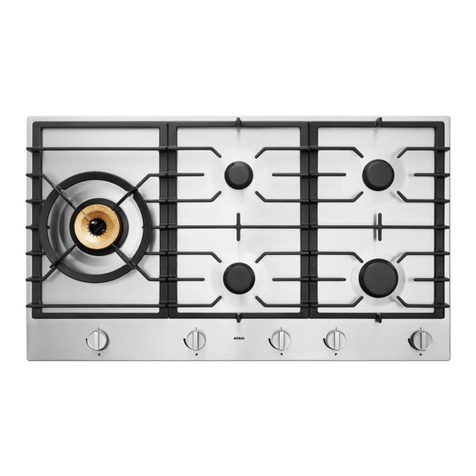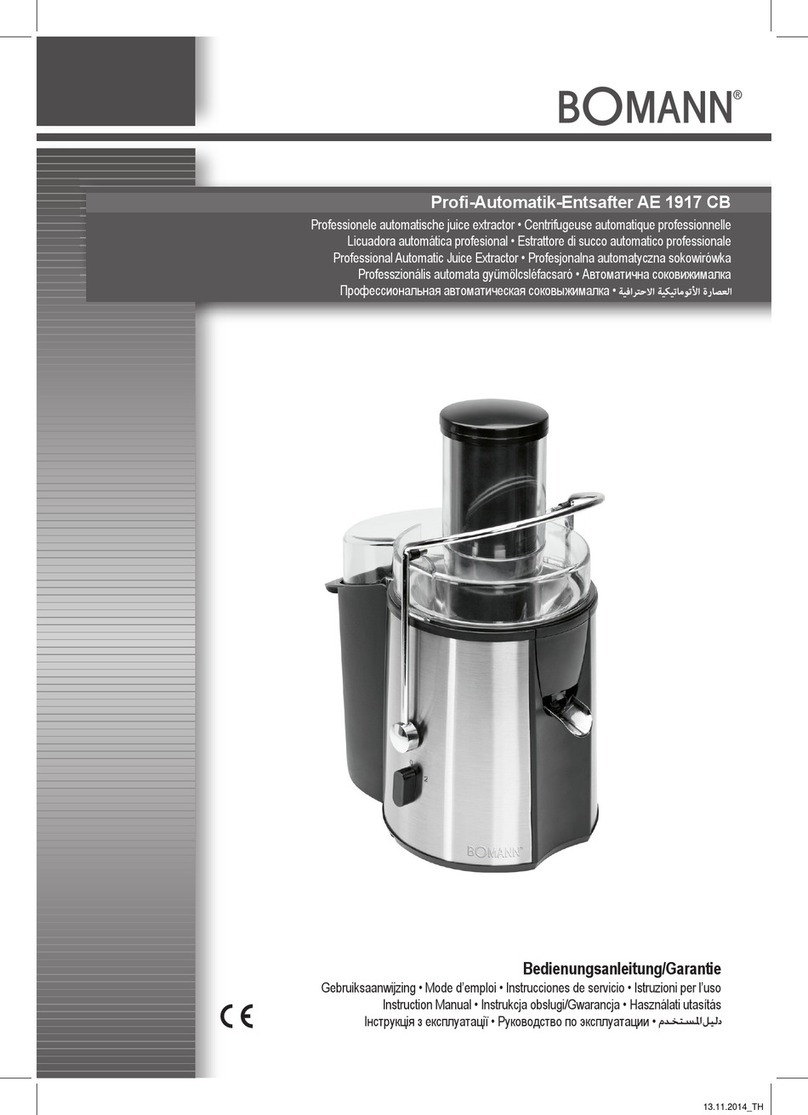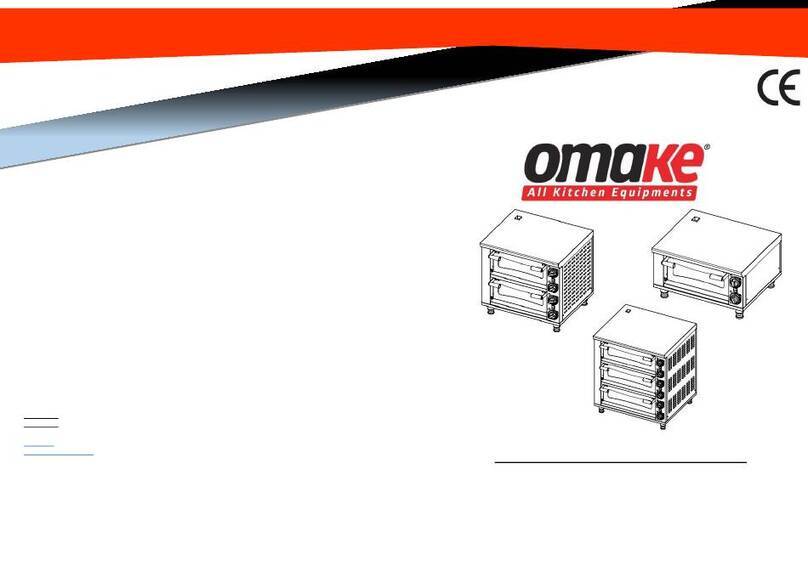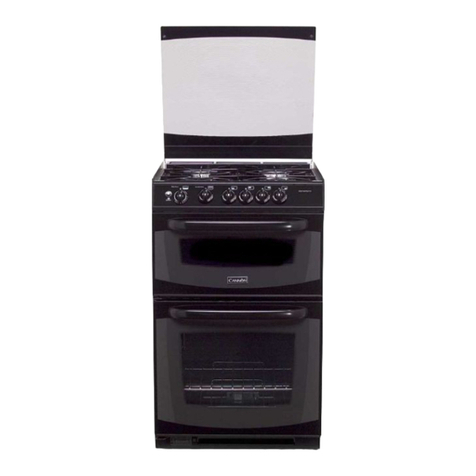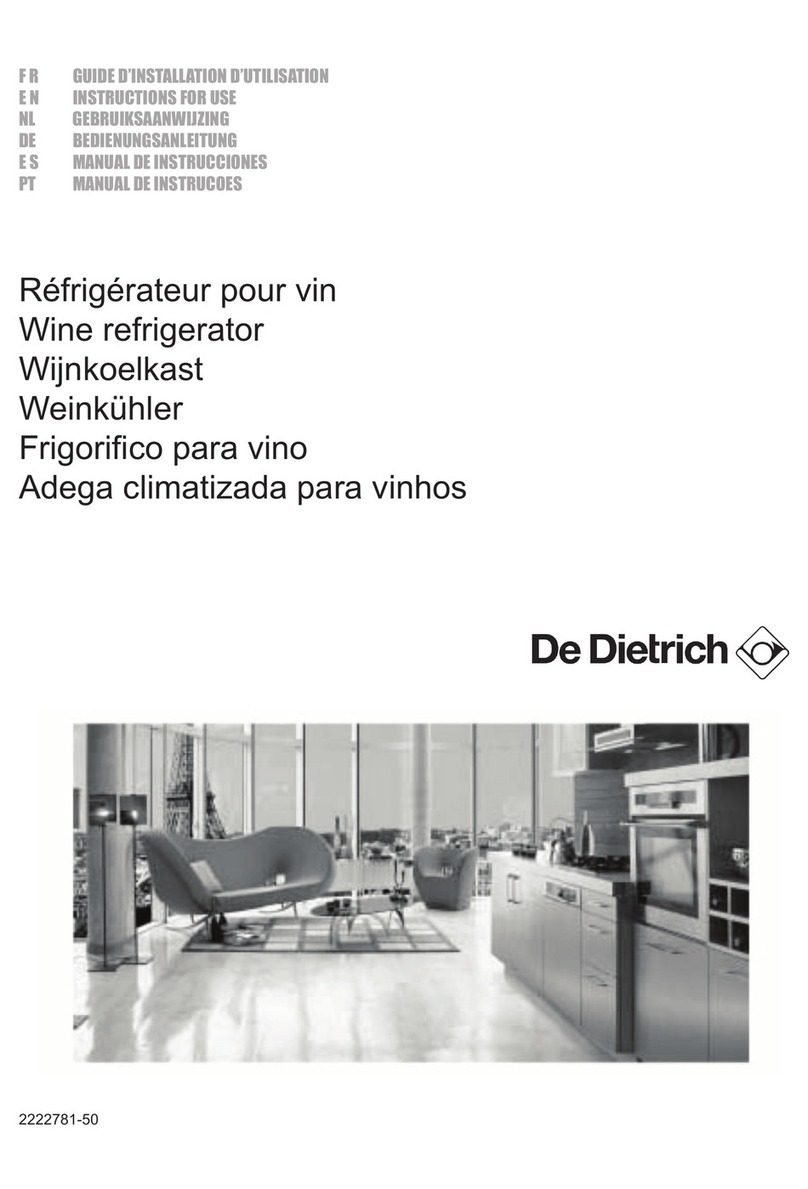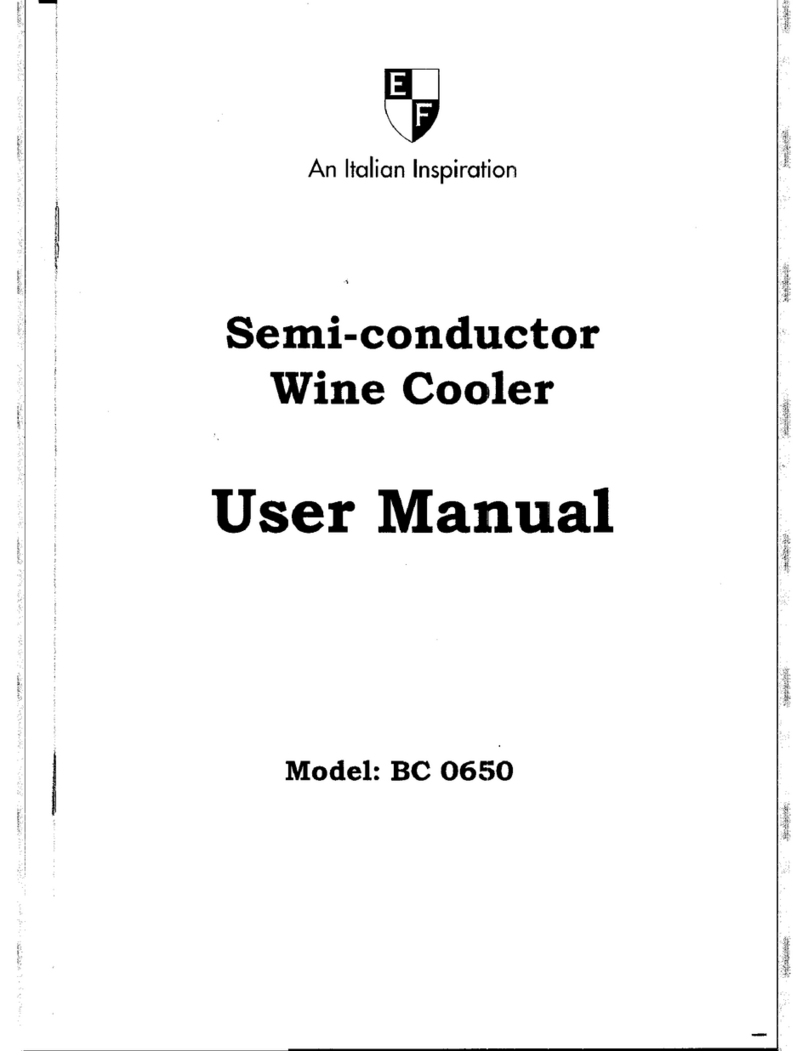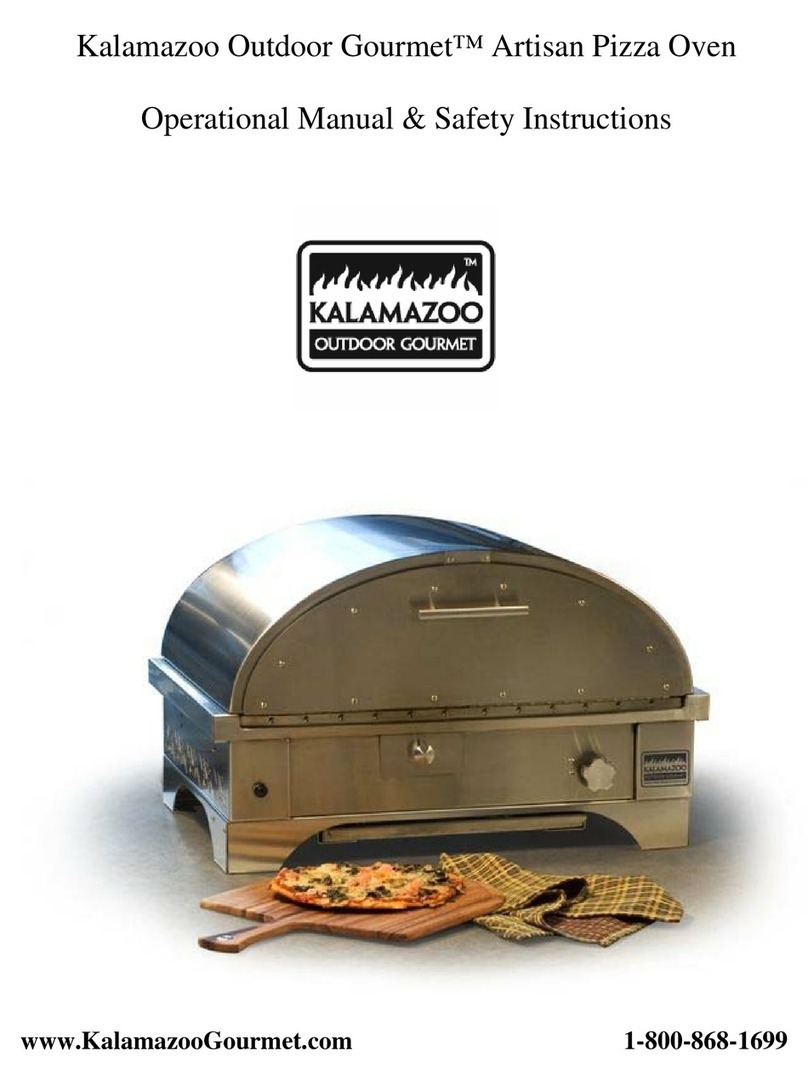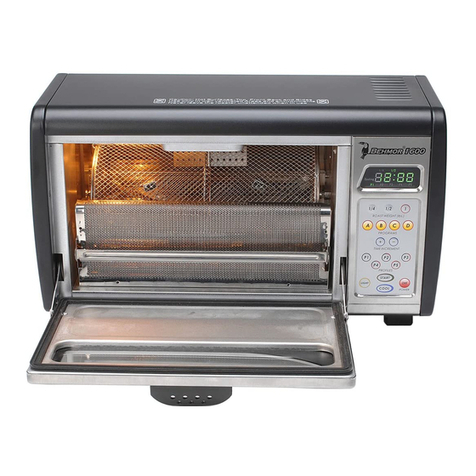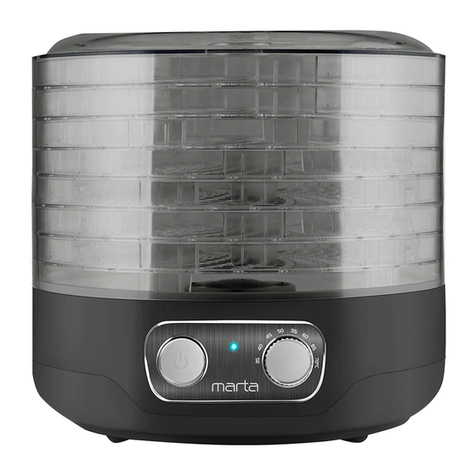Elba CX 906 DF Technical manual

EXCELLENCE
COOKER
CX 906 DF
GB
Instruction for the use - Installation advice
KEEP IN A SAFE PLACE

2
Read the instructions carefully before installing and using the appliance.
CAUTION: this apparatus must only be installed in a permanently ventilated room in
compliance with the applicable regulations.
Dear Customer,
Thank you for having purchased and
given your preference to our product.
The safety precautions and
recommendations reported below are
for your own safety and that of others.
They will also provide a means by
which to make full use of the features
offered by your appliance.
Please preserve this booklet
carefully. It may be useful in future,
either to yourself or to others in the
event that doubts should arise relating
to its operation.
This appliance must be used only
for the task it has explicitly been
designed for, that is for cooking
foodstuffs. Any other form of usage
is to be considered as inappropriate
and therefore dangerous.
The manufacturer declines all
responsibility in the event of damage
caused by improper, incorrect or
illogical use of the appliance.
IMPORTANT INSTRUCTIONS AND
ADVICE FOR THE USE OF
ELECTRICAL APPLIANCES
The use of any electrical appliance
requires the compliance with some basic
rules, namely:
– do not touch the appliance with wet or
damp hands (or feet)
– do not use the appliance whilst in bare
feet
– do not allow the appliance to be oper-
ated by children or unqualified per-
sons without supervision.
The manufacturer cannot be deemed
responsible for damages caused by
wrong or incorrect use.
AFTER SALES SERVICE
If you require After Sales Service contact
the MASTERCARE Domestic Appliance
Helpline Telephone 08701 565550.
This cooker has been designed, constructed and marketed in compliance with:
- safety requirements of EEC Directive “Gas” 90/396;
- safety requirements of EEC Directive “Low voltage” 73/23;
- protection requirements of EEC Directive “EMC” 89/336;
- requirements of EEC Directive 93/68.
Important:
This appliance is designed and manufactured solely for the cooking of domestic
(household) food and is not suitable for any non domestic application and therefore
should not be used in a commercial environment.
The appliance guarantee will be void if the appliance is used within a non domestic
environment i.e. a semi commercial, commercial or communal environment.

3
FIRST USE THE OVEN
It is advised to follow these instructions:
– Clean the interior of the oven with cloth
soaked in water and detergent
(neutral) then dry carefully.
– Furnish the interior of the oven by
placing the wire racks as described at
chapter “Cleaning and maintenance”.
– Insert shelves and tray.
– Empty the oven and close the door.
Heat the oven at the maximum
temperature setting for around two
hours to eliminate the odour of
grease and fumes from the
manufacturing process. Make sure
that the kitchen is well ventilated and
do not remain in the room during this
process.
IMPORTANT PRECAUTIONS
AND RECOMMENDATIONS
After having unpacked the appliance,
check to ensure that it is not damaged
and that the oven door closes correctly.
In case of doubt, do not use it and con-
sult your supplier or a professionally
qualified technician.
Packing elements (i.e. plastic bags,
polystyrene foam, nails, packing straps,
etc.) should not be left around within
easy reach of children, as these may
cause serious injuries.
●ATTENTION: please peel plastic
cover of both sides and front
before use.
●Do not attempt to modify the technical
characteristics of the appliance as
this may cause danger to users.
●Do not carry out cleaning or mainte-
nance operations on the appliance
without having previously disconnect-
ed it from the electric power supply.
●If you should decide not to use this
appliance any longer (or decide to
substitute another model), before dis-
posing of it, it is recommended that it
be made inoperative in an appropri-
ate manner in accordance to health
and environmental protection regula-
tions, ensuring in particular that all
potentially hazardous parts be made
harmless, especially in relation to
children who could play with unused
appliances.
●After use, ensure that the knobs are
in off position.
●Do not allow children or other unqual-
ified people to use the appliance with-
out your supervision.
●During and after use of the cooker,
certain parts will become very hot. Do
not touch hot parts.
●Keep children away from the cooker
when it is in use.
●Some appliances are supplied with a
protective film on steel and aluminium
parts. This film must be removed
before using the appliance.
●Fire risk! Do not store flammable
material in the oven and in the stor-
age compartment.
●Make sure that electrical cables con-
necting other appliances in the prox-
imity of the cooker cannot come into
contact with the hob or become
entrapped in the oven door.
●Do not line the oven walls with alu-
minium foil. Do not place baking trays
or the drip tray on the base of the
oven chamber.
●The manufacturer declines all liability
for injury to persons or damage to
property caused by incorrect or
improper use of the appliance.
●The various components of the appli-
ance are recyclable. Dispose of them
in accordance with the regulations in
force in your country. If the appliance
is to be scrapped, remove the power
cord.
●WARNING
When correctly installed, your product
meets all safety requirements laid down
for this type of product category.
However special care should be taken
around the rear or the underneath of
the appliance as these areas are not
designed or intended to be touched and
may contain sharp or rough edges, that
may cause injury.

4
1 - COOKING HOB
Fig. 1.1
23
4
5
6
1
COOKING HOB
1. Triple-ring burner (TC) 3,50 kW
2. Semi-rapid burner (SR) 1,75 kW
3. Rapid burner (R) 3,00 kW
4. Auxiliary burner (A) 1,00 kW
5. Semi-rapid burner (SR) 1,75 kW
6. Auxiliary burner (A) 1,00 kW

5
2 - CONTROL PANEL
Fig. 2.1
CONTROL PANEL - Controls description
1. Electronic clock/end cooking timer
2. Multifunction oven switch knob
3. Multifunction oven thermostat knob
4. Front left burner control knob
5. Rear left burner control knob
6. Front central burner control knob
7. Rear central burner control knob
8. Rear right burner control knob
9. Front right burner control knob
A
U
T
O
123456789
Please note: This appliance incorporates a safety cooling fan which you will hear operat-
ing whenever the oven or grill are in use.
This fan is to reduce the external temperature of the appliance and cool the internal com-
ponents.

6
3 - USE OF COOKING HOB
GAS BURNERS
Each burner is controlled by a gas tap
assuring the opening and the closing of
the gas supply.
Make the lever of the knob match with
the indicator on the control panel to
obtain:
– symbol ●: off
– symbol : full on (nominal rate)
– symbol : reduced rate
To reduce the gas flow to minimum,
rotate the knob anti-clockwise to point
the lever towards the small flame
symbol.
Fig. 3.1
Other intermediate operating adjust-
ments can be achieved by positioning
the lever between the maximum and
minimum aperture positions, and never
between the maximum aperture and off
positions.
LIGHTING THE BURNERS
To ignite the burner, the following
instructions are to be followed:
1) Lightly press and turn the knob anti-
clockwise, and position the knob
indicator to the symbol printed on
the control panel (figs. 3.1 - 3.2).
2) Press the knob to operate the electric
ignition; or, in the case of a mains
failure light the burner with a match or
lighted taper.
3) Adjust the burner according to the
setting required.
Fig. 3.2
The maximum aperture position permits
rapid boiling of liquids, whereas the min-
imum aperture position allows slower
warming of food or maintaining boiling
conditions of liquids (simmering).

7
CHOICE OF THE BURNER
On the control panel, near every knob,
there is a diagram that indicates which
burner is controlled by that knob.
The suitable burner must be chosen
according to the diameter and the
capacity used.
As an indication, the burners and the
pots must be used in the following way:
It is important that the diameter of the
pot be suitable to the potentiality of the
burner so as not to compromise the high
output of the burners and therefore
energy waste.
A small pot on a large burner does not
give you a boiling point in a shorter
amount of time since the capacity of
heat absorption of a liquid mass
depends on the volume and the surface
of the pot.
Fig. 3.3
BURNERS POT DIAMETER
Auxiliary 12 - 14 cm
Semi-rapid 16 - 24 cm
Rapid 24 - 26 cm
Triple-ring 26 - 28 cm
Wok max. 36 cm
do not use pans with concave or convex bases
Caution! The cooking hob becomes
very hot during operation. Keep
children well out of reach.
AIR FLOW
(cooling fan) AIR FLOW
(cooling fan) AIR FLOW
(cooling fan)
CORRECT USE OF RAPID BURNER
Fig. 3.4

8
CORRECT USE OF TRIPLE-RING BURNER (Fig. 3.5a - 3.5b)
The flat-bottomed pans are to be placed directly onto the pan-support.
When using a WOK you need to place the supplied stand in the burner to avoid any faulty
operation of the double-ring burner (Fig. 3.5a - 3.5b).
Fig. 3.5a
WRONG
Fig. 3.5b
CORRECT

9
Attention: the oven door becomes
very hot during operation.
Keep children away.
4 - MULTIFUNCTION ELECTRIC OVEN
GENERAL FEATURES
As its name indicates, this is an oven
that presents particular features from an
operational point of view.
In fact, it is possible to insert 7 different
programs to satisfy every cooking need.
The 7 positions, thermostatically con-
trolled, are obtained by 4 heating ele-
ments which are:
– Bottom element 1725 W
– Top element 1725 W
– Grill element 2500 W
– Circular element 2500 W
– Fan motor 25 W
– Oven lamp 15 W
NOTE:
Upon first use, it is advisable to operate the
oven for 30 minutes in the position and
for another 15 minutes at the maximum
temperature (thermostat knob on position
225) in the positions and , to elimi-
nate possible traces of grease on the heat-
ing elements.
Clean the oven and accessories with warm
water and washing-up liquid.
WARNING:
The door is hot, use the handle.
OPERATING PRINCIPLES
Heating and cooking in the MULTI-
FUNCTION oven are obtained in the fol-
lowing ways:
a. by normal convection
The heat is produced by the upper and
lower heating elements.
b. by forced convection
A fan sucks in the air contained in the
oven muffle, which sends it through
the circular heating element and then
sends it back through the muffle.
Before the hot air is sucked back
again by the fan to repeat the
described cycle, it envelops the food in
the oven, provoking a complete and
rapid cooking.
It is possible to cook several dishes
simultaneously.
c. by semi-forced convection
The heat produced by the upper and
lower heating elements is distributed
throughout the oven by the fan.
d. by radiation
The heat is irradiated by the infra red
grill element.
e. by radiation and ventilation
The irradiated heat from the infra red
grill element is distributed throughout
the oven by the fan.
f. by ventilation
The food is defrosted by using the fan
only function without heat.

10
Fig. 4.1 Fig. 4.2
OVEN LIGHT
By turning the knob onto this setting we
light the oven cavity (15 W).
The oven remains alight while any of the
functions is on.
THERMOSTAT KNOB (fig. 4.2)
To turn on the heating elements of the
oven, set the switch knob on the desired
program and the thermostat knob onto
the desired temperature.
To set the temperature, it is necessary to
make the knob indicator meet the chosen
number.
The elements will turn ON or OFF auto-
matically according to the energy need
which is determined by the thermostat.
TRADITIONAL CONVECTION
COOKING
The upper and lower heating elements
are switched on. The heat is diffused by
natural convection and the temperature
must be regulated between 50° C and
225° C with the thermostat knob.
It is necessary to preheat the oven
before introducing the foods to be
cooked.
Recommended for:
For foods which require the same
cooking temperature both internally and
externally, i. e. roasts, spare ribs,
meringue, etc.
FUNCTION SELECTOR KNOB (fig. 4.1)
Rotate the knob clockwise to set the
oven for one of the following functions:

11
GRILLING
The infra-red heating element is switched
on. The heat is diffused by radiation.
Use with the oven door closed and the
thermostat knob to
between 50° and
225°C
for max 15 minutes, then to posi-
tion 175°C.
Note: It is recommended that you do not
grill for longer than 30 minutes at any
one time.
Attention: the oven door becomes very
hot during operation. Keep children
away.
For correct use see chapter “USE OF
THE GRILL”
Recommended for:
Intense grilling action for cooking with a
broiler; browning, crisping, “au gratin”,
toasting, etc.
Recommended for:
For foods that must be well done on the
outside and tender or rare on the inside,
i. e. lasagna, lamb, roast beef, whole
fish, etc.
HOT AIR COOKING
The circular element and the fan are on.
The heat is diffused by forced
convection and the temperature must be
regulated between 50° and 225 °C with
the thermostat knob.
It is not necessary to preheat the oven.
DEFROSTING FROZEN FOODS
Only the oven fan is on. To be used with
the thermostat knob on “●” because the
other positions have no effect. The defrost-
ing is done by simple ventilation without
heat.
Recommended for:
To rapidly defrost frozen foods; 1 kilogram
requires about one hour.
The defrosting times vary according to the
quantity and type of foods to be defrosted.
VENTILATED GRILL COOKING
The infra-red ray grill and the fan are on.
The heat is mainly diffused by radiation
and the fan then distributes it throughout
the oven. The temperature must be regu-
lated between 50° and 175 °C for max
30 minutes, with the thermostat knob. It is
necessary to preheat the oven for about 5
minutes.
Use with the oven door closed.
Attention: the oven door becomes very
hot during operation.
Keep children away.
For correct use see chapter “GRILLING
AND “AU GRATIN”.
Recommended for:
For grill cooking when a fast outside
browning is necessary to keep the juices
in, i. e. veal steak, steak, hamburger, etc.
THAWING AND WARMING UP
The upper element and the circular ele-
ment connected in series, are switched on;
also the fan is on. The heat is diffused by
forced convection with the most heat being
produced by the upper element.
The temperature must be regulated
between 50° and 140 °C with the thermo-
stat knob.
Recommended for:
To keep foods hot after cooking. To slowly
heat already cooked foods.

12
SIMULTANEOUS COOKING OF
DIFFERENT FOODS
The MULTI-FUNCTION oven set on
position and gives simultaneous
heterogeneous cooking of different foods.
Different foods such as fish, cake and
meat can be cooked together without
mixing the smells and flavours.
This is possible since the fats and vapors
are oxidized while passing through the
electrical element and therefore are not
deposited onto the foods.
The only precautions to follow are:
– The cooking temperatures of the
different foods must be as close to as
possible, with a maximum difference of
20° - 25 °C.
– The introduction of the different dishes
in the oven must be done at different
times in relation to the cooking times of
each one.
The time and energy saved with this type
of cooking is obvious.
CONVECTION COOKING WITH
VENTILATION
The upper and lower heating elements
and the fan turn on.
The heat coming from the top and bot-
tom is diffused by forced convection.
The temperature must be regulated
between 50° and 225 °C with the ther-
mostat knob.
Recommended for:
For foods of large volume and quantity
which require the same internal and
external degree of cooking; for ie: rolled
roasts, turkey, legs, cakes, etc.
COOKING ADVICE
STERILIZATION
Sterilization of foods to be conserved, in
full and hermetically sealed jars, is done
in the following way:
a. Set the switch to position .
b. Set the thermostat knob to position
185 °C and preheat the oven.
c. Fill the dripping pan with hot water.
d. Set the jars onto the dripping pan
making sure they do not touch each
other and the door and set the ther-
mostat knob to position 135 °C.
When sterilization has begun, that is,
when the contents of the jars start to
bubble, turn off the oven and let cool.
REGENERATION
Set the switch to position and the
thermostat knob to position 150° C.
Bread becomes fragrant again if wet with
a few drops of water and put into the
oven for about 10 minutes at the highest
temperature.
ROASTING
To obtain classical roasting, it is neces-
sary to remember:
– that it is advisable to maintain a tem-
perature between 180 and 200 °C.
– that the cooking time depends on the
quantity and the type of foods.

13
GRILLING AND “AU GRATIN”
Grilling may be done without the roasting
jack on position of the switch,
because the hot air completely envelops
the food that is to be cooked.
Set the thermostat to position 175 °C
and after having preheated the oven,
simply place the food on the rack.
Close the door and let the oven operate
with the thermostat on position 50 and
175 °C, until grilling is done.
Adding a few dabs of butter before the
end of the cooking time gives the golden
“au gratin” effect.
Grilling with the oven door closed.
It is recommended that you do not
grill for longer than 30 minutes at any
one time.
Attention: the oven door becomes
very hot during operation.
Keep children away.
USE OF THE GRILL
Turn on the grill as indicated in the previ-
ous paragraph and leave to warm up for
approximately 5 minutes with the door
closed.
Introduce the food to be cooked, posi-
tioning the rack as close to the grill as
possible.
The dripping pan should be placed
under the rack to catch the cooking
juices and fats.
Grilling with the oven door closed.
Grilling with the oven door closed and
do not for longer than 30 minutes at
any one time (Grilling for longer than
the reccomended time may mean
the appliance overheats).
Attention: the oven door becomes
very hot during operation.
Keep children away.
OVEN COOKING
Before introducing the food, preheat the
oven to the desired temperature.
For a correct preheating operation, it is
advisable to remove the tray from the
oven and introduce it together with the
food, when the oven has reached the
desired temperature.
Check the cooking time and turn off the
oven 5 minutes before the theoretical
time to recuperate the stored heat.
COOKING EXAMPLES
Temperatures and times are
approximate as they vary depending on
the quality and amount of food.
Remember to use ovenproof dishes and
to adjust the oven temperature during
cooking if necessary.
DISHES TEMPERATURE
Cakes 180°
Doughnuts 180°
Cheese soufflé 200°
Potatoes soufflé 200°
Roast veal 200°
Spinach crepes 200°
Potatoes in milk 200°
Chicken breasts in tomato 200°
Sole fish filet 200°
Whiting 200°
Cream puffs 200°
Plum pie 200°
Meat balls 200°
Veal meatloaf 200°
Grilled chicken - roast chicken 220°
Baked lasagna 220°
Roast beef 220°
Oven cooked pasta 220°
Lemon cake 220°
Rice creol 225°
Baked onions 225°
Stuffed potatoes 225°
Grilled veal joint 225°
Marmalade pie 225°
Pound cake 225°
Turkish shishkebab 250°
Pizza with anchovies 250°

14
5 - ELECTRONIC CLOCK/END COOKING TIMER
The electronic programmer is a device
with the following functions:
– 24 hours clock with illuminated
display
– Timing of oven cooking with automatic
switch-off (max. 99 minutes).
ELECTRONIC CLOCK
Upon immediate connection of the oven
or after a mains failure, three zeros will
flash on the programmer panel.
To set the clock it is necessary to push
the button and then, within 7 seconds,
the or button until you have set the
correct time.
The clock will show zero after a mains
failure.
Attention: When the programmer dis-
play shows three flashing zeros the oven
cannot be switched on.
The oven can be switched on when the
symbol is shown in the display.
A
U
T
O
SETTING THE FREQUENCY OF THE
ALARM SOUND
The selection from 3 possibilities of
sound can be made by pressing the
button.
Fig. 5.1

15
ELECTRONIC ALARM
The programmer can be used as an
alarm only for a maximum period of 99
minutes.
To set the alarm, push the or
button until you obtain the desired time
in the display.
Once the time has elasped, an
intermittent buzzer, lasting 7 minutes,
will start; this can be stopped by
pressing the button.
Attention: If the oven is switched on
when the buzzer starts, it will be
automatically switched off.
For it to operate furtherly you have to
stop the buzzer by pressing the
button.
COOKING WITH AUTOMATIC
SWITCH-OFF
The aim of this function is to automatical-
ly stop the cooking after a pre pro-
grammed time, for a maximum period of
99 minutes.
To set the cooking time, push the or
button until you obtain the desired
time in the display.
The symbol AUTO will be shown in the
display.
Then you adjust the oven thermostat
knob according to the required tempera-
ture.
The oven will immediately start to oper-
ate and will work for the pre programmed
time.
The display shows the count down.
Clock time can be displayed by pressing
the button.
Once the time has elasped, the oven will
switch off automatically, the symbol
AUTO will go off and an intermittent
buzzer, lasting 7 minutes, will start; this
can be stopped by pressing the but-
ton.
Important: Before the buzzer is stopped
switch off the oven manually.
To cancel the cooking program at any
time press the and buttons
together and release the button first.

16
6 - CLEANING AND MAINTENANCE
GENERAL ADVICE
– When the appliance is not being
used, it is advisable to keep the gas
tap closed.
– Every now and then check to make
sure that the flexible tube that con-
nects the gas line or the gas cylinder
to the appliance is in perfect condition
and eventually substitute it if it shows
signs of wearing or damage.
– The periodical lubrication of the gas
taps must be done only by specialized
personnel.
– If a tap becomes stiff, do not force;
contact your local After Sales Service
Centre.
–Important:
Before any operation of cleaning
and maintenance disconnect the
appliance from the electrical net-
work.
Attention
The appliance gets very hot, mainly
around the cooking areas. It is very
important that children are not left
alone in the kitchen when you are
cooking.
Do not use a steam cleaner
because the moisture can get into
the appliance thus make it unsafe.
ENAMELLED PARTS
All the enamelled parts must be cleaned
with a sponge and soapy water or other
non-abrasive products.
Dry preferably with a soft cloth.
Acidic substances like lemon juice,
tomato sauce, vinegar etc. can damage
the enamel if left too long.
STAINLESS STEEL SURFACES
(COATED)
The stainless steel front panels on this
cooker (facia, oven door, storage com-
partment) are protected by a finger-print
proof lacquer.
To avoid damaging this lacquer, do not
clean the stainless steel with abrasive
cleaners or abrasive cloths or scouring
pads.
ONLY SOAPY/WARM WATER MUST
BE USED TO CLEAN THE (COATED)
STAINLESS STEEL SURFACES.
STAINLESS STEEL SURFACES
(UNCOATED)
The hob + sides are made from un-
coated stainless steel.
Can be cleaned with an appropriate
stainless steel cleaner.
WARNING
When correctly installed, your product
meets all safety requirements laid down
for this type of product category.
However special care should be taken
around the rear or the underneath of
the appliance as these areas are not
designed or intended to be touched and
may contain sharp or rough edges, that
may cause injury.

17
Fig. 6.1
Fig. 6.2
ASSEMBLY AND DISMANTLING OF
THE SIDE RUNNER FRAMES
– Fit the side runner frames into the
holes on the side walls inside the
oven (Fig. 6.1).
– Slide the tray and rack into the run-
ners fig. 6.2.
The rack must be fitted so that the
safety catch, which stops it sliding out,
faces the inside of the oven.
– To dismantle, operate in reverse
order.
INSIDE OF OVEN
This must be cleaned regularly.
Remove and refit the side runner frames
as described on the next chapter.
With the oven warm, wipe the inside
walls with a cloth soaked in very hot
soapy water or another suitable product.
The bottom of the oven, side runner
frames, tray and rack can be removed
and washed.
REPLACING THE OVEN LIGHT BULB
Switch the cooker off at the mains.
When the oven is cool unscrew and
replace the bulb with another one resis-
tant to high temperatures (300°C), volt-
age 230 V (50 Hz), 15 W, E14.
Note: Oven bulb replacement is not
covered by your guarantee.

18 Fig. 6.3
S
F
C
BURNERS
T
hey can be removed and washed with
soapy water only.
They will remain always perfect if
cleaned with products used for silver-
ware.
After cleaning or wash, check that burn-
er-caps and burner-heads are dry before
placing them in the respective hous-
ings.
Note: To avoid damage to the electric
ignition do not use it when the burn-
ers are not in place.
CORRECT REPLACEMENT OF THE
BURNERS
It is very important to check that the
burner flame distributor F and the cap C
has been correctly positioned (see fig.
6.3-6.4) - failure to do so can cause a
poor burner flame and/or damage to the
burner and hob.
Check that the electrode “S” (fig. 6.3) is
always clean to ensure trouble-free
sparking.
Fig. 6.4
GAS TAPS
In the event of operating faults in the gas
taps, call the After Sales Service
Department.

19
TRIPLE RING BURNER
The triple ring burner must be correctly positioned (see fig. 6.7); the burner rib must be
enter in their logement as shown by the arrow see fig. 6.5).
Then position the cap Aand the ring B(fig. 6.6 - 6.7).
The burner correctly positioned must not rotate (fig. 6.6).
Fig. 6.7
Fig. 6.5
Fig. 6.6
AB

20
OVEN TRAY
The oven tray must be correctly
placed on the wire shelf (fig.
6.8) then inserted into the side
runners (fig. 6.9).
Fig. 6.9
OVEN FLOOR
The oven floor “F” (fig. 6.9) can be easily
removed to facilitate cleaning.
Remember to replace the floor correctly
afterwards.
Be careful not to confuse the tray “L”
with the oven floor “F”.
L
F
L
Fig. 6.8
Table of contents
Other Elba Kitchen Appliance manuals
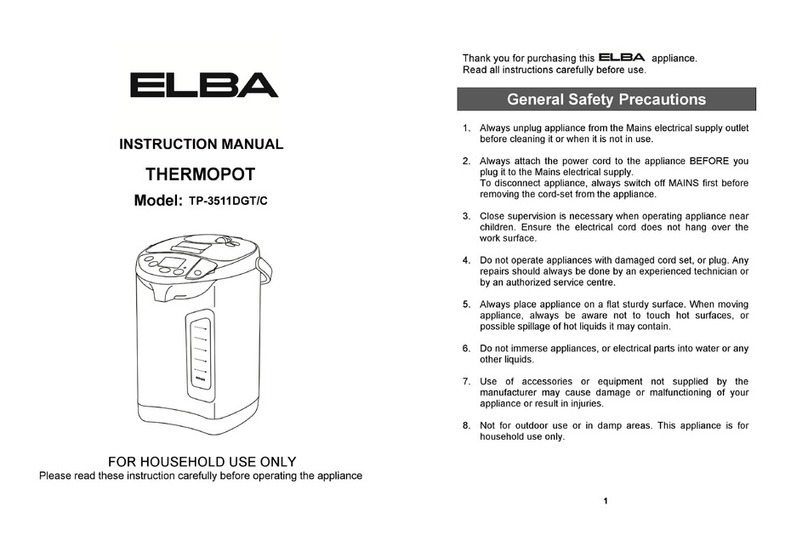
Elba
Elba TP-3511DGT User manual
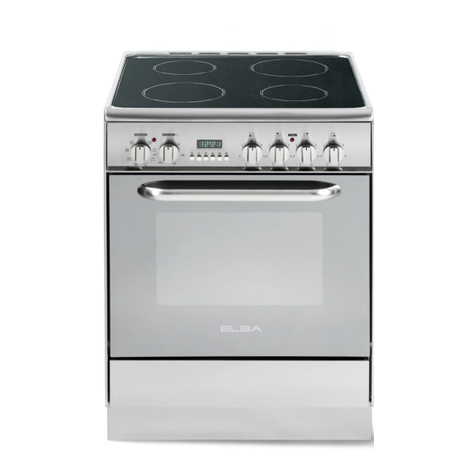
Elba
Elba S 66 X 938 User manual

Elba
Elba EMC-N5017 User manual
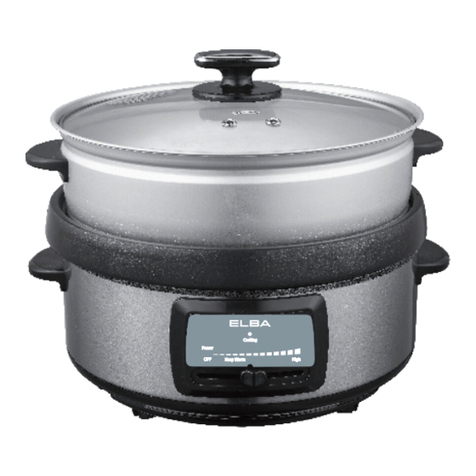
Elba
Elba EMC-F4316 User manual
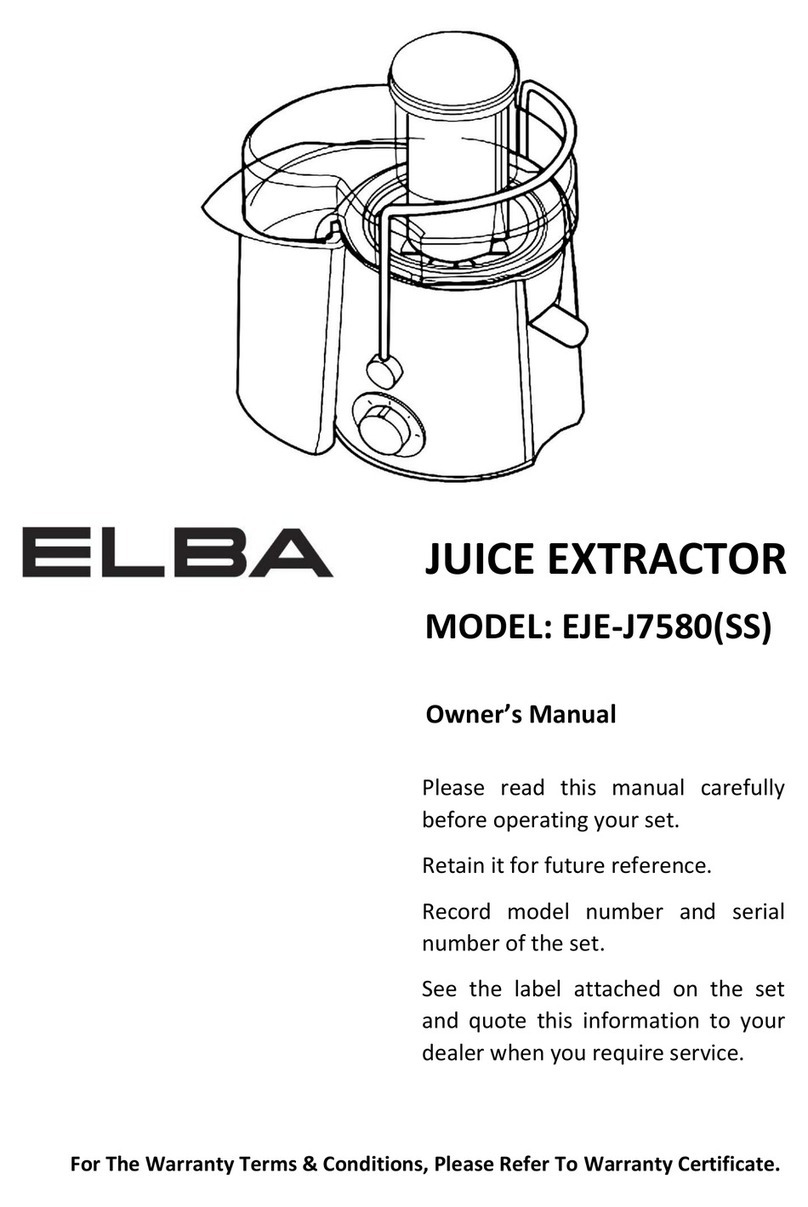
Elba
Elba EJE-J7580(SS) User manual
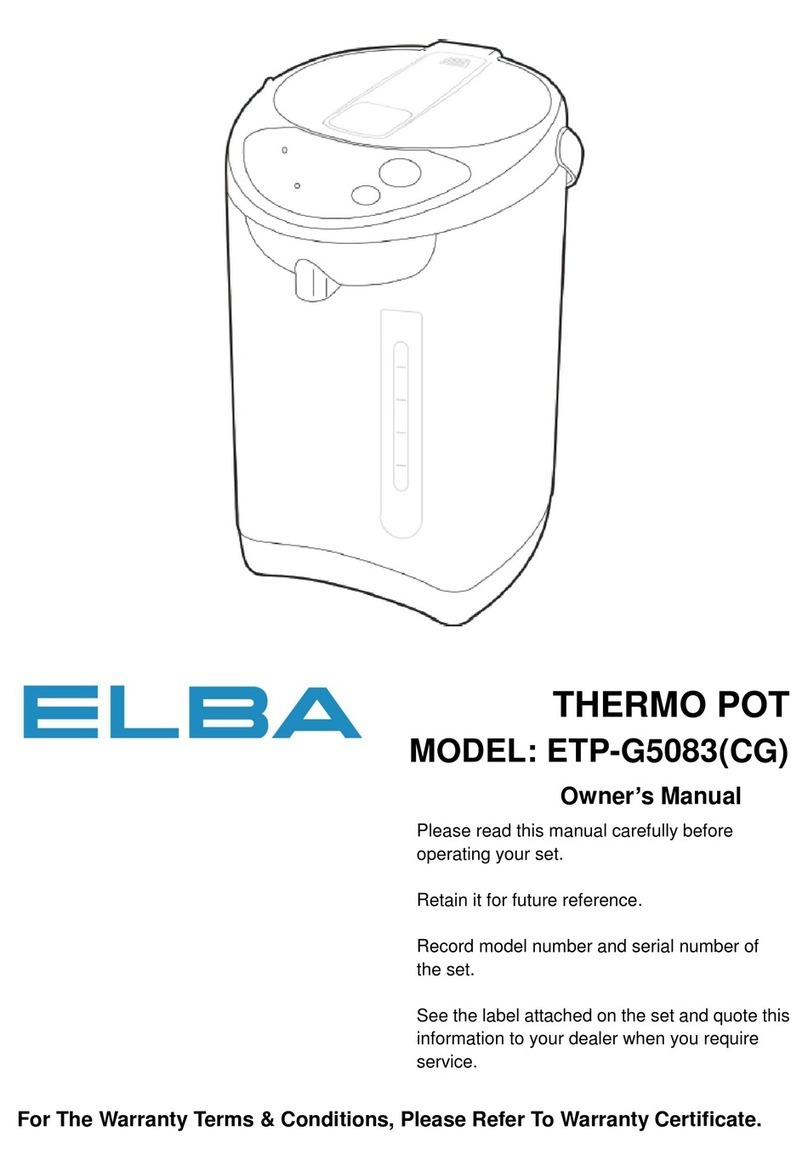
Elba
Elba ETP-G5083(CG) User manual
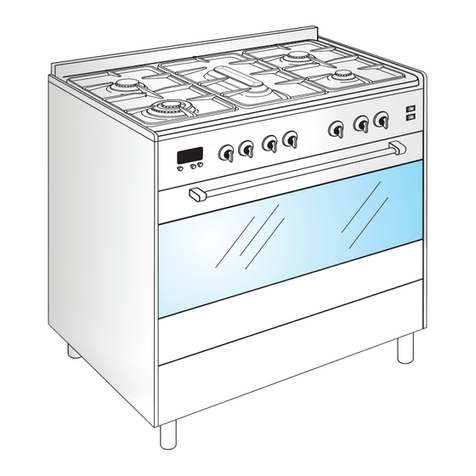
Elba
Elba EC 967F SS User manual

Elba
Elba EJE-A2050 User manual
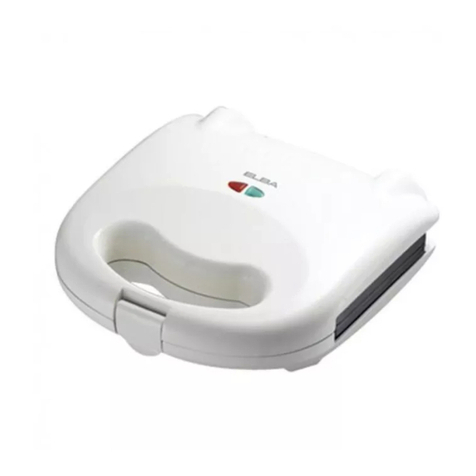
Elba
Elba ESM-2085 User manual
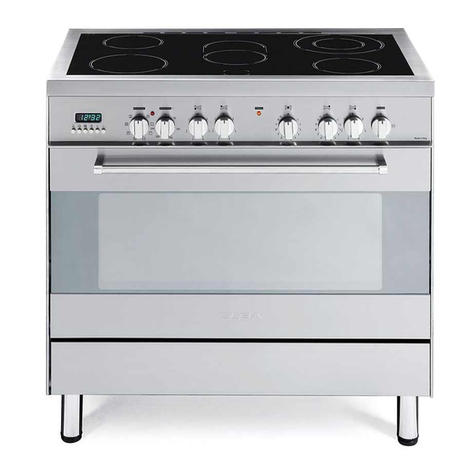
Elba
Elba N96 EX 939 S Technical manual

Elba
Elba EJE-9811A User manual
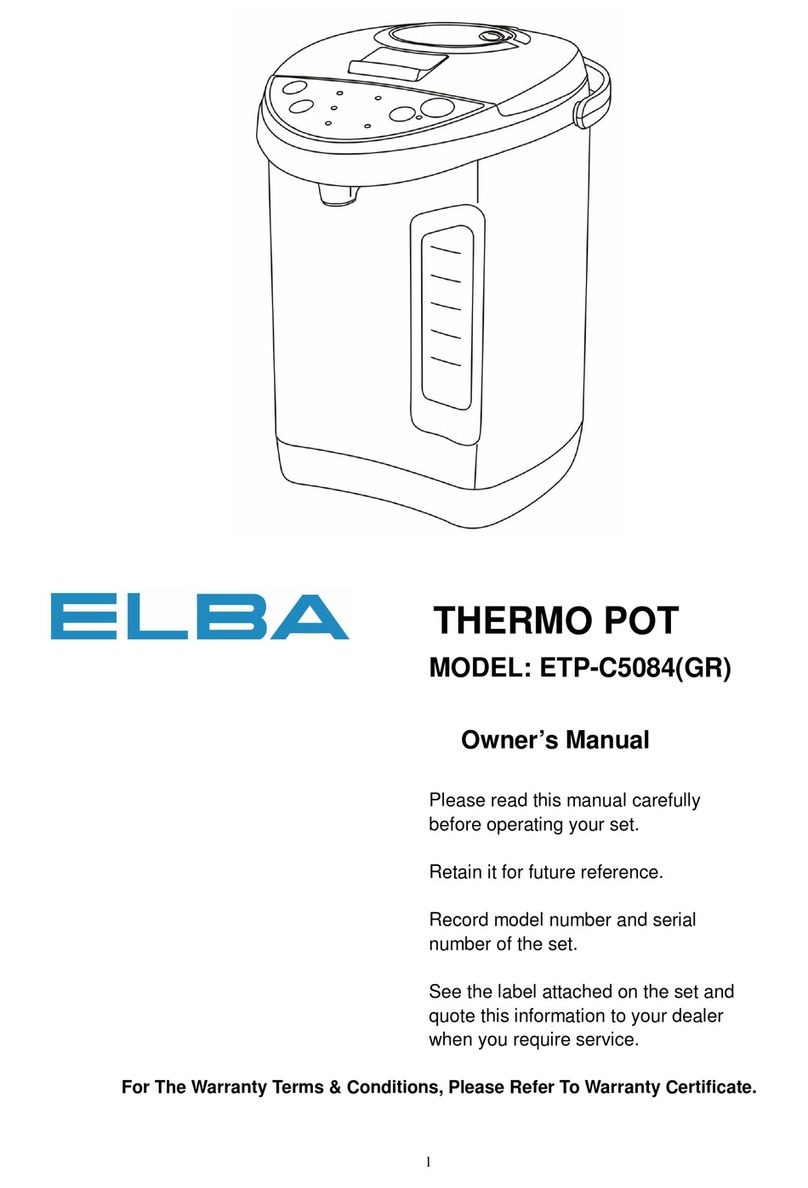
Elba
Elba ETP-C5084(GR) User manual
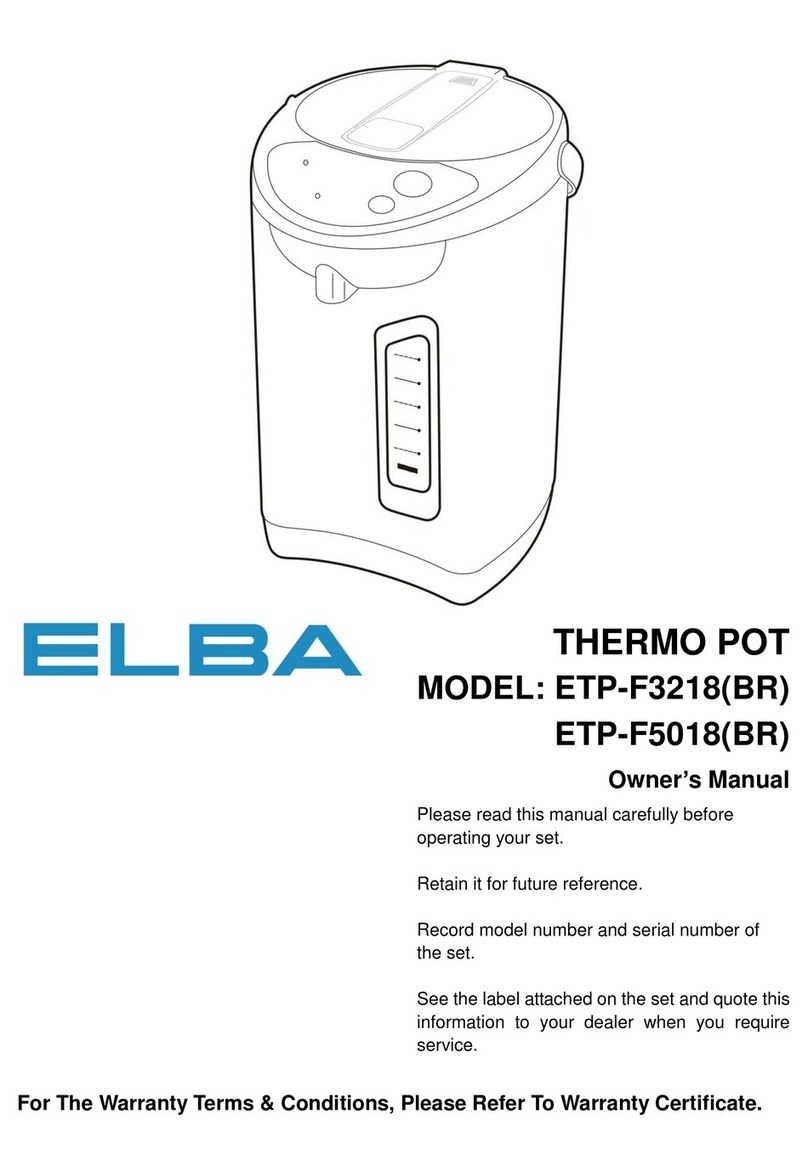
Elba
Elba ETP-F3218 User manual
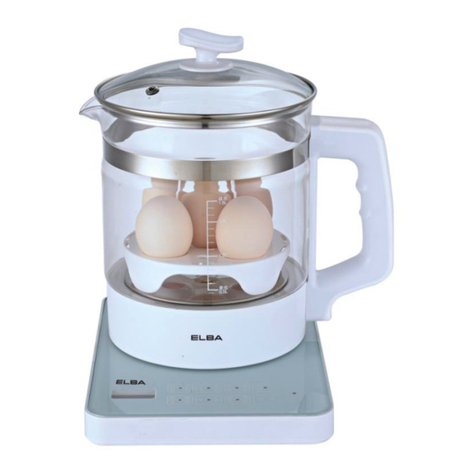
Elba
Elba EHP-E1881G User manual

Elba
Elba EEC 563 series User manual
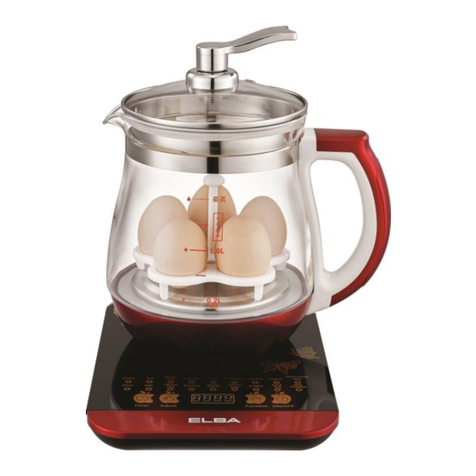
Elba
Elba EHP-G1583G(RD) User manual
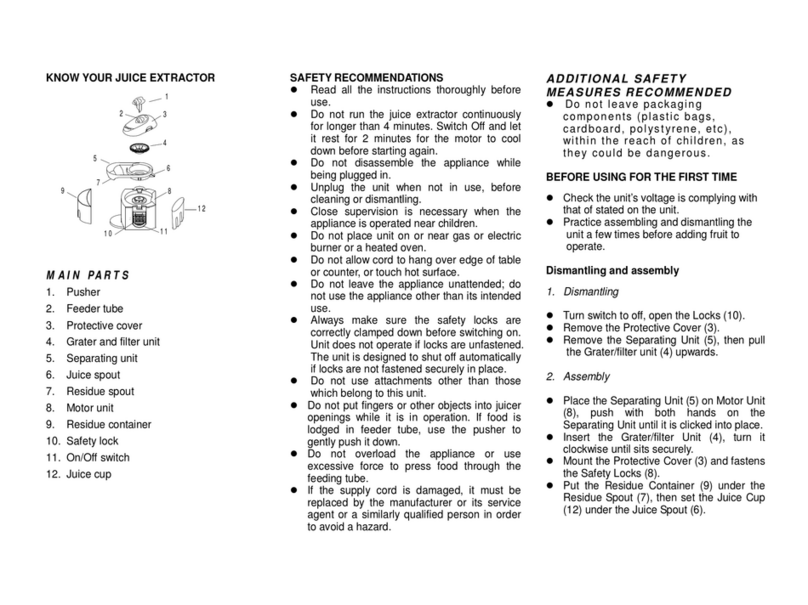
Elba
Elba EJE-1302 User manual
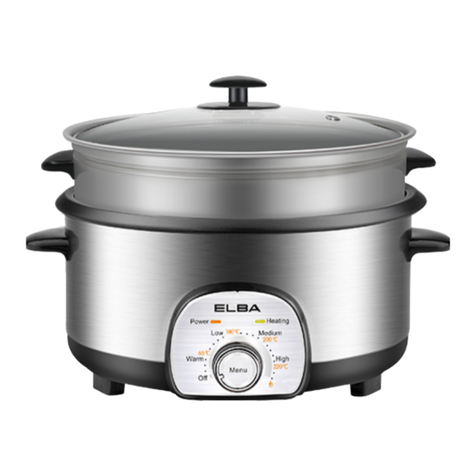
Elba
Elba EMC-K5010 User manual

Elba
Elba EMC-N9015 User manual
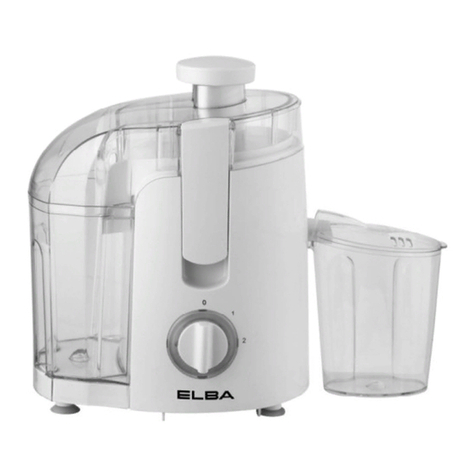
Elba
Elba EJE-A0435 User manual
